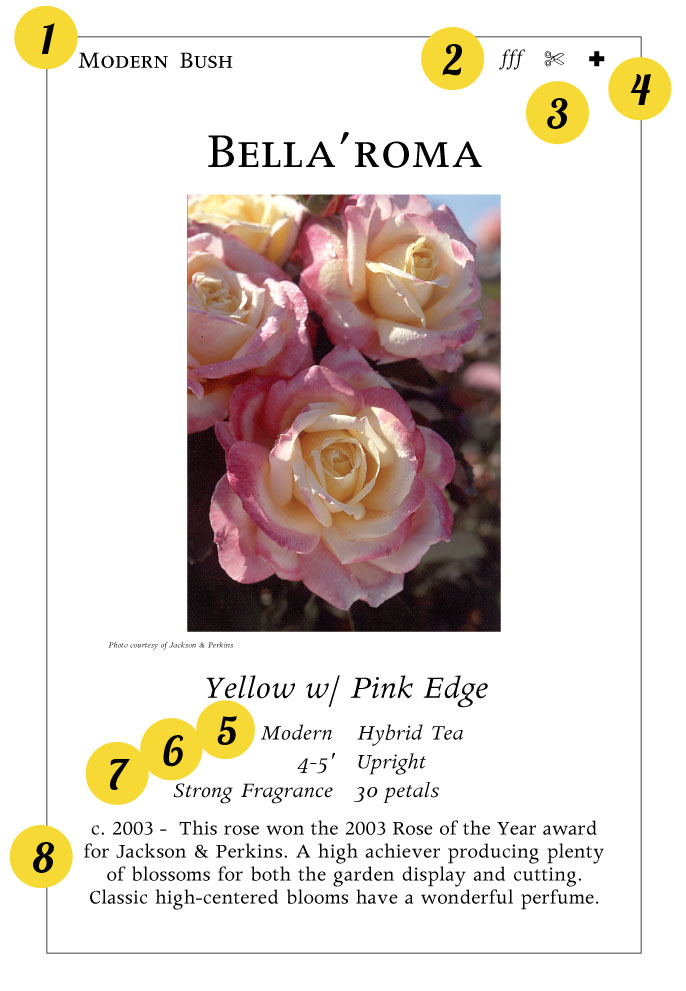We pride ourselves on providing both informative signage throughout the nursery and professional advice from our staff to help you find and choose the best plants for your garden. That said, with the abundance of plant varieties available at the nursery, sometimes the hardest part is narrowing down the choices!
Our rose signage features key details that we hope, make it a little easier to choose. Our signs are designed to help steer you in the right direction, whether you're planting for fragrance, color, cutting and beyond! Below, you'll find our easy guide to help you master our signage. As always, our staff is on hand to help with any questions that may arise!
1. Group Categories
Modern Bush - Refers to those roses typically used for cut flower arranging and exhibition. Includes Hybrid Tea, Floribunda and Grandiflora.
Landscape - Plants in this group have been hybridized for easy care - they rarely need to be sprayed or deadheaded.
Climbing - These are roses that send out long canes and can be trained on a wall or over an arbor.
English Style - Roses that combine the open-flowering habit and fragrance of Old Garden roses with the continuous bloom and color range of modern hybrids.
Miniature - Roses with little flowers and petite foliage on plants that stay 24" high and under.
Patio Tree - Floribunda and Miniature hybrids grafted on 24" stems to form a small tree.
Standard Tree - Hybrid Tea, Grandiflora and Floribunda hybrids grafted on 36" stems to create a larger tree.
2. Fragrance
Each "f" denotes the level of fragrance. One "f" is light while "fff" is strong.
3. Good For Cutting
If the signage features a scissor symbol, this means the rose is good for cutting. This is especially important if you are planning on using your roses to create bouquets and arrangements.
4. Disease Resistance
A "+" sign denotes that the particular variety has shown more resistance to one or more of the major rose diseases including rust, powdery mildew, black spot, etc.
5. Rose Types
Hybrid Tea - Typical cutting rose. Long stemmed, usually one large blossom per stem.
Floribunda - Usually shorter than Hybrid Tea. Multiple smaller blossoms. Can still be used for cutting.
Grandiflora - Usually taller than Hybrid Tea. Large, well-formed flowers in clusters. Can be cut.
Other Types - For more information on some of the many other rose types, please ask for assistance from our Nursery staff!
6. Height and Habit
Explains how the plant grows.
7. Petal Count
Roses with a high petal count require more heat to open fully. On the cooler side of the tunnel (Oakland and Berkeley), choose roses with 35 or less petals, on the warm (hot) Lamorinda side, roses with 30 or more petals do well.
8. Introduction Date
Or AARS Award, and a brief description.

